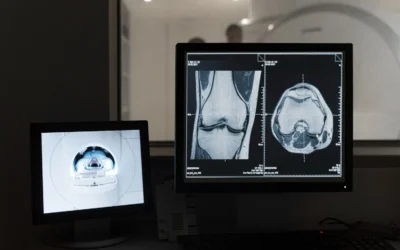Cancer is a formidable challenge in medicine. Understanding how cancer develops and spreads plays a crucial role in developing effective treatments. This blog post explores this topic through the story of a firefighter exposed to PFAS chemicals, known to be a risk factor for cancer.
Table of Contents
The Genetic Basis of Cancer
Cancer is primarily caused by changes in genes that control cell behavior. Various factors, including exposure to harmful chemicals, can trigger these changes. For our firefighter, John, exposure to PFAS during his career has led to potential genetic mutations.
Abnormal Signals in Cancer
Mutated cells can send abnormal signals. In John’s case, the PFAS exposure has caused some cells to behave abnormally, promoting their survival, speeding up their growth, enhancing their movement capabilities, recruiting blood vessels to supply them with nutrients, and drawing in more oxygen to sustain their life.
Gene Cascades and Cancer
These abnormal signals create gene cascades, a series of genetic changes that promote cancer development. Essentially, cells have pathways that regulate their behavior, but in cancer, these pathways are hijacked. For instance, the genes that help immune cells move to infection sites can be misused by cancer cells to spread throughout the body.
Mutation Progression
Cancer development often involves multiple genetic mutations. Initially, one mutation might inactivate a gene that suppresses tumors. Over time, additional mutations allow cancer cells to grow uncontrollably and spread. For John, continuous exposure to PFAS increases the risk of accumulating these harmful mutations.
Metastasis: Cancer’s Spread
One of the most dangerous aspects of cancer is its ability to metastasize, spreading to other parts of the body. In John’s scenario, mutated cells from his lungs could migrate to other organs, such as the liver or bones, establishing new tumors.
Essential Traits of Cancer Cells
Cancer cells possess several key traits that make them particularly difficult to treat. These include self-sufficiency in growth signals, insensitivity to growth-inhibitory signals, evasion of programmed cell death, limitless replicative potential, sustained angiogenesis, and tissue invasion and metastasis.
Challenges in Treating Cancer
Treating cancer is challenging due to tumors developing resistance to drugs, new mutations occurring, and tumors relapsing and spreading even after initial treatment.
Future of Cancer Research
The future of cancer research aims to connect our understanding of cancer biology with effective treatments. Scientists are developing new approaches and technologies to tackle the complexity of cancer, which is vital for improving outcomes for people facing heightened cancer risks due to their occupational exposures.
Conclusion
Understanding how cancer grows and spreads is crucial for developing better treatments. For firefighters exposed to harmful chemicals, this knowledge can lead to more effective prevention and early detection strategies. Continued research and innovation are essential in the fight against cancer, providing hope for those at risk and those battling the disease.





0 Comments